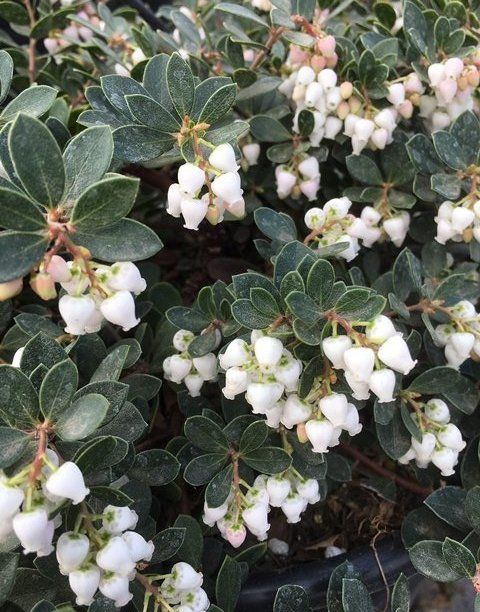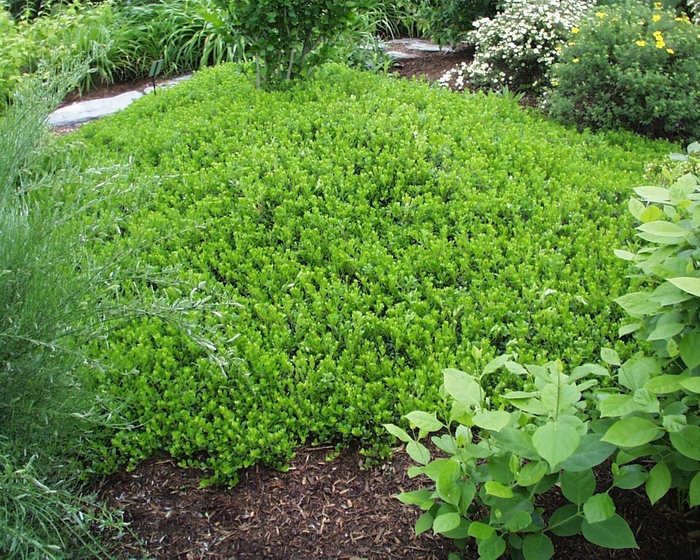Arctostaphylos 'Emerald Carpet': A Groundcover Gem

In the world of landscaping and gardening, Arctostaphylos 'Emerald Carpet' shines brightly as a versatile and attractive groundcover plant.
Known for its dense, low-growing habit and vibrant foliage, this cultivar of the manzanita species adds beauty and functionality to a variety of outdoor spaces.
In this article, we'll explore the characteristics, cultivation, and care of Arctostaphylos 'Emerald Carpet', showcasing why it's a top choice for gardeners seeking a hardy and visually appealing groundcover option.
Introduction to Arctostaphylos 'Emerald Carpet'
Arctostaphylos 'Emerald Carpet', commonly referred to as Emerald Carpet manzanita, is a cultivar of Arctostaphylos uva-ursi, a species of evergreen shrub native to North America.
This particular cultivar is prized for its compact, spreading growth habit and its lush, emerald-green foliage.
It forms a dense carpet of foliage that serves as an excellent weed suppressor and erosion controller, making it an ideal choice for groundcover in a variety of landscaping applications.
Characteristics of Arctostaphylos 'Emerald Carpet'
Foliage
The most striking feature is its glossy, leathery leaves, which are small and oval-shaped, measuring around 1/2 inch in length.
The foliage emerges as bright green in spring and maintains its color throughout the year, providing year-round interest in the landscape.
Flower
In late winter to early spring, Arctostaphylos 'Emerald Carpet' produces delicate clusters of small, urn-shaped flowers that range in color from white to pale pink.
While not as showy as some other flowering plants, these blooms add a subtle charm to the plant and attract pollinators such as bees and butterflies.
Habit
Arctostaphylos 'Emerald Carpet' forms a low, spreading mound that typically reaches a height of 6 to 12 inches and can spread up to 6 feet or more. It grows slowly but steadily, gradually filling in the landscape with its dense, mat-like growth.

Cultivation and Care
Arctostaphylos 'Emerald Carpet' is relatively low-maintenance once established, but proper care is essential to ensure its health and vitality.
Here are some tips for cultivating and caring for this groundcover gem:
Sunlight
Plant Arctostaphylos 'Emerald Carpet' in a location that receives full sunlight to partial shade.
While it can tolerate some shade, it will produce the most vibrant foliage and blooms in full sun.
Soil
This plant prefers well-drained, acidic soil with a pH level between 5.0 and 6.5.
Amend heavy clay or compacted soil with organic matter such as compost to improve drainage and fertility.
Watering
Once established, is drought-tolerant and requires minimal supplemental watering.
Water deeply but infrequently, allowing the soil to dry out slightly between waterings. Avoid overwatering, as this can lead to root rot and other issues.
Mulching
Apply a layer of organic mulch, such as shredded bark or wood chips, around the base of the plants to help retain soil moisture and suppress weed growth.
Keep the mulch pulled back several inches from the stems to prevent rot.
Pruning
Minimal pruning is required. Remove any dead, diseased, or damaged growth as needed, and lightly shape the plant to maintain its desired form.
Avoid heavy pruning, as this can damage the plant and reduce flowering.
Fertilization
Generally does not require fertilization if grown in healthy soil. However, if necessary, apply a slow-release, balanced fertilizer in spring, following the manufacturer's recommendations.
Pest and Disease Control
This plant is relatively resistant to pests and diseases, but it may occasionally be susceptible to issues such as powdery mildew or root rot.
Monitor the plants regularly for signs of pest infestations or disease, and treat any problems promptly with appropriate fungicides or pesticides.
By following these care guidelines, you can enjoy the beauty and resilience of Arctostaphylos 'Emerald Carpet' in your landscape, creating a lush carpet of greenery that enhances the aesthetic appeal of your outdoor spaces while providing valuable ecological benefits.
Whether used as a groundcover in a garden bed, a border planting along a walkway, or a slope stabilizer on a hillside, this versatile plant is sure to impress with its enduring beauty and adaptability.
Leave a Reply
You must be logged in to post a comment.